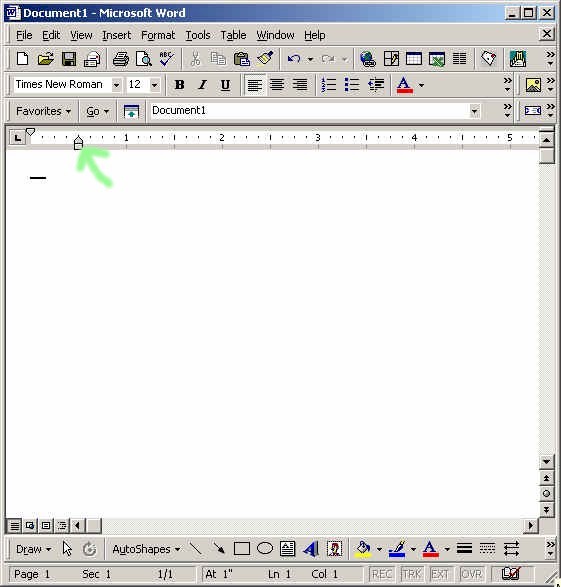|
Word Processing: Creating Templates A Tutorial for In-service and Pre-service Teachers
|
||
| Contents
How to Create a Document Template Creating Template for Lesson Plans Creating a Template for a Reference Page Creating a Template for a Rubric Contacts
|
Creating a
Reference/Works Cited Template
Creating citations is a time consuming and tedious chore. Creating a template to format the properties for this kind of document will take advantage of some useful features of MS Word, and save you some time. Information about citations: There are two basic style guides used for citations. One is the APA style (American Psychological Association), the other is the MLA style (Modern Language Association). This tutorial provides directions to create a Reference page using the APA style. The cited sources used in the APA style are listed on a separate page from the rest of the research paper. The page is headed References. The page is double spaced with the resources listed in alphabetical order by the author's last name. Please refer to an APA style guide for the exact pattern to follow with regard to periods, commas, spacing, etc. for the different types of resources used. How to create a Reference page: On a Reference page, the resources begin at the left margin and the subsequent lines in the same citation (paragraph) are indented one-half inch from the left margin. We will use the "hanging indent" to help us format the entries. Then when we are finished typing in the resources, we will use the "sort" feature to automatically alphabetize them.
Now you are ready to enter the sources. The entries should automatically wrap so that all lines following the first line in each entry will be indented one half inch. You can enter your own sources paying attention to the required APA pattern. Or you may use the following resources: (Do not cut and paste from this list, type them out.) Gall, Carlotta. “A trail of misery as Macedonia fights Albanian insurgency,” The New York Times 18 May 2001. http://www.nytimes.com/2001/05/18/world/18MACE.html (5-27-2001). Zigo, D. (1998).
“Narrative thinking as a strategy among struggling early adolescent
readers and writers.” Journal of Research in Childhood Education
v. 12 no1 (Fall/Winter 1998) p. 56-70. FirstSearch. OCLC. (24
Feb. 2001). Stanfa,
K.: O’Shea, D. (1998). “The Play’s the thing for reading
comprehension.” Teaching Exceptional Children v. 31 no2
(Nov./Dec. 1998) p. 48-55. FirstSearch. OCLC. (25 Feb. 2001). Donziger,
Steven. (1996). The real war on crime: The report of the National
Criminal Senna, Joseph P., and Larry G. Siegel. (1999). Introduction to criminal justice. Boston: Wadsworth Publishing Company.
To alphabetize the list:
To save the document as a template:
Refer to "How to Create a Document Template" for more information. When you get ready to use your template, you open it and type in your new sources. You may refer to the old sources already listed in the template to help you remember the proper pattern to use. Then, of course, you would remove the old ones before you save the page as a new document (not as a template this time). Or you could select, cut and paste them into a new page at the end of your research paper. Remember to re-sort the new entries after you enter them.
NEC.edu | Technology Learning Packets Main Page © J. Black 2001 |
|
